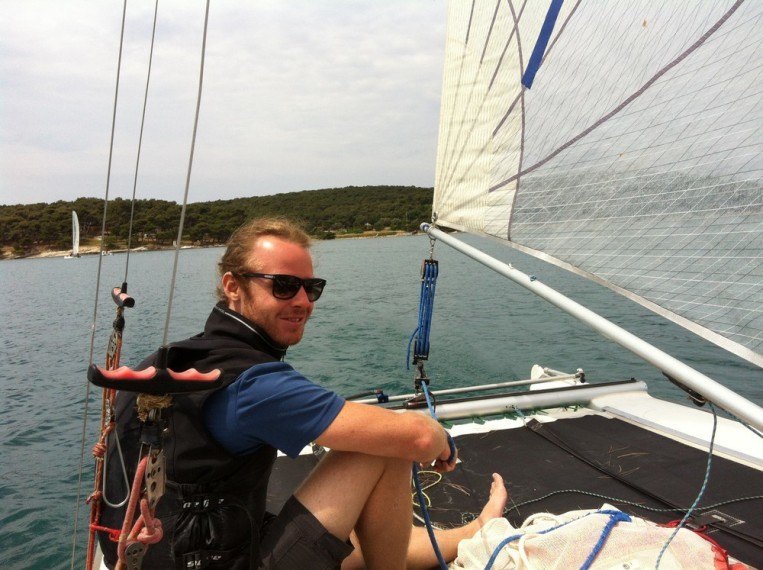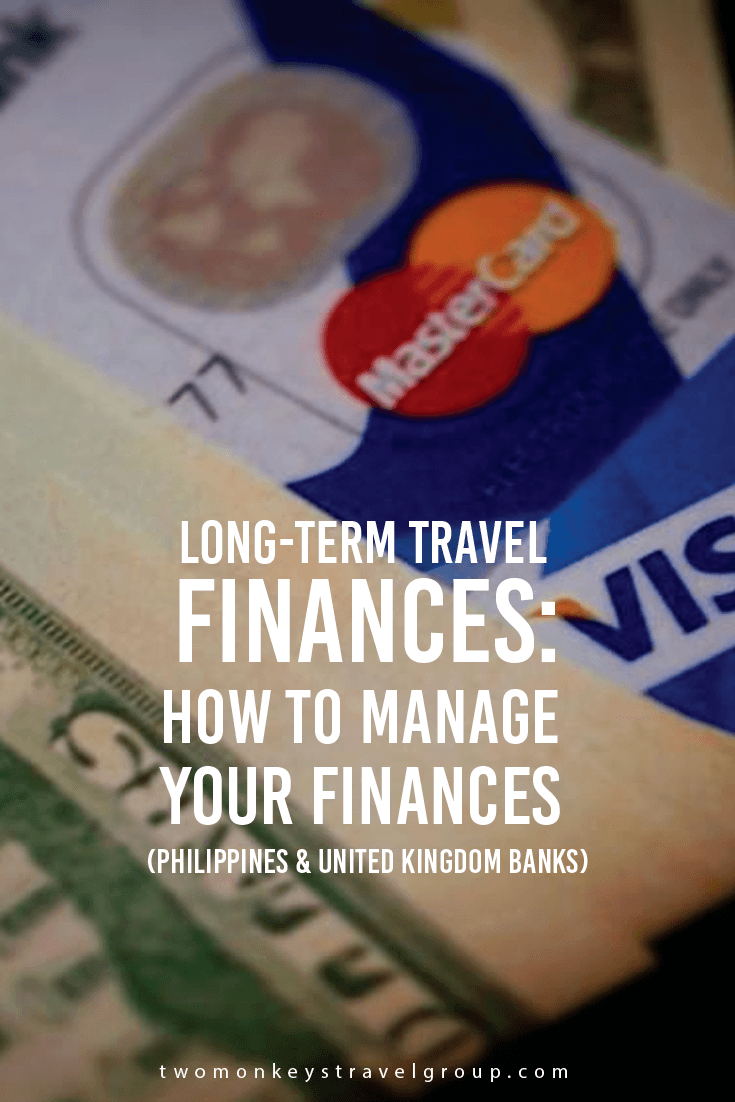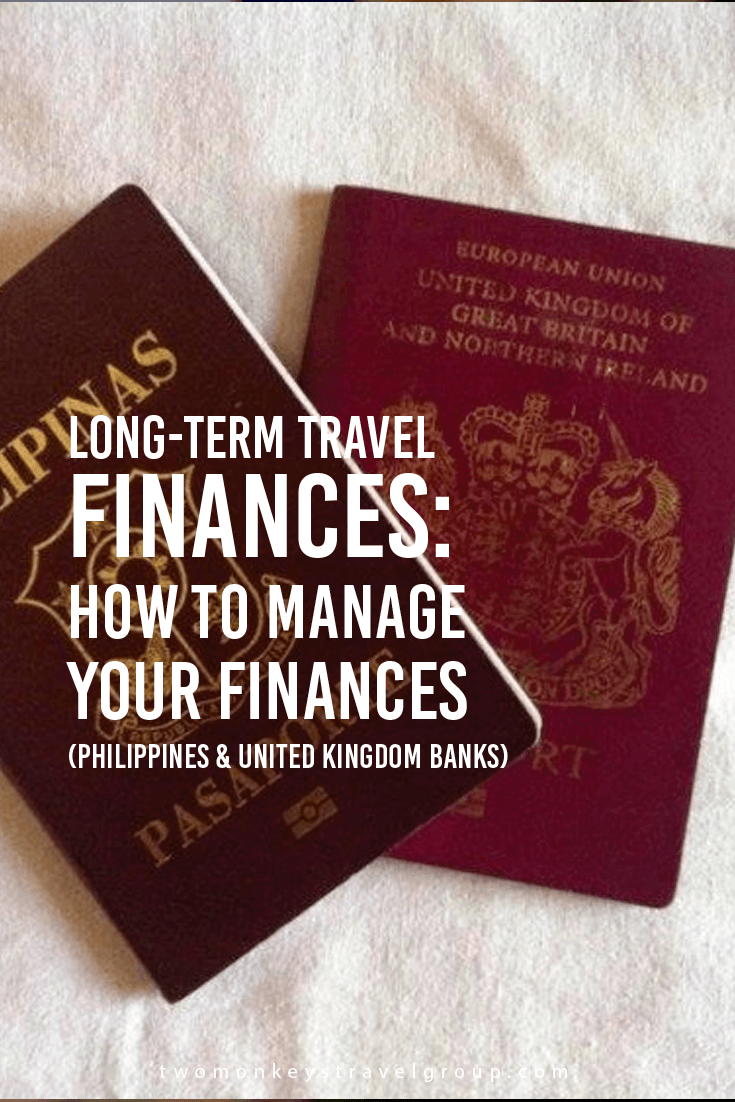Long-term travel: How to manage your finances (Filipino and British Banks)
This article is inspired by our readers who’ve been asking us how we manage our finances on the road. Some might think that having a Filipino bank account might be a problem when travelling, but I can assure you it isn’t!
This is based on our experience and might only be relevant for travellers with a Philippines Bank Account and/or UK Bank Account. Jonathan and I don’t have any credit cards as we only use cash, our debit cards and online banking with Paypal and Payoneer (with own card). (Update: We just applied to get 2 credit cards last February but it’s only because it’s quite hard to travel around USA and Europe without it, most of the hotels would ask to hold the card when you check in aside from booking flight tickets. Anyway, we survived traveling the world for 2 years without credit cards!)
Some of you already know how we funded our South America backpacking adventures and it’s all because of all the jobs we’ve done while travelling, mainly teaching English and practicing massage. If you want to know how YOU can fund your travels, then check out this previous article and our list of Practical travel jobs you can do while travelling.
KACH Finances – Philippines Bank Account
Enjoying Pamukkale!
When I left Kuwait and Iraq to travel long term, I went home to Philippines to handle some formalities, most of which was about my bank account. I already had a BPI (Bank of the Philippines Islands) account from my University days so I decided to stick with them.
First of all, I opened a Dollar Account aside from my Peso Savings Account, then activated my Online Banking, then I activated the ATM Cards for International transactions and lastly registered my sister’s bank account as my beneficiary so I could transfer money to her online.
For the first 5 months of my travel, I tried not to use the bank savings and relied solely on the money I had in cash and the money I earned while travelling (teaching English/ freelance gigs), but there were still a few issues that I wish I had settled before leaving the Philippines.
I can use my BPI bank card in South East Asia, India, UK and now in South America – Peru, Chile and Bolivia.
ISSUE 1: The BPI Bank Card only has CIRRUS – therefore I can’t book stuff online, nor can withdraw money in banks easily that only accept VISA and MASTERCARD. The solution, which I discovered later, is that I should have APPLIED for and OPENED a VISA DEBIT CARD that is connected to my Savings account. BPI has one, but I can’t get it now as I’m not in the country so I linked my sister’s bank account to mine to get her a VISA DEBIT CARD – so I can still transfer money to her if I need her to pay for something online on my behalf.
I initially had issues understanding part of my online banking, but an awesome reader who happened to work in BPI (Thanks Jack Lloyd Derramas!) helped me to sort it out and I couldn’t be happier with my BPI bank service!
Jonathan’s Finances – UK Bank Account
Before leaving the UK, Jonathan already had his Barclays account and he applied for a prepaid CAXTON FX currency card which is connected to his Barclays. He can transfer money to his Caxton card and most ATM withdrawals are FREE. Unlike in the Philippines, British bank accounts have something called an “overdraft,” which means that they can still take money from their current account (for a daily fee) to use even if they don’t actually have any money! It’s more like a short term loan than a credit card, but spending money you don’t have can be just as risky. Jonathan refuses to even apply for a credit card!
JOINT FINANCES – Steps on How We Handled it
After few months of dating and agreeing that we will start having our savings together, Jon and I have decided that I would handle the financial documentation. I’m an avid fan of Excel Spreadsheet and I always track and document how much we spend and earn!
Jon and I lived in Vietnam together for 7 months, but in Vietnam you can’t easily transfer money outside of the country and while working there we got paid in cash. We could have opened an HSBC account but we decided not to. So when we left Vietnam and flew to Singapore, we sent half of our savings to my BPI account and half of it was kept in CASH while travelling around India (I will tell you later how to handle your CASH)
First Step – Decide where to put the Travel Money and Long-term Savings – you should separate them! (Yes, even while travelling we try to save money for our future plans)
So since Jon’s UK account is a debit card and has access with Visa/Mastercard ATM machines, we decided that we would use his bank account for our travel expenses while my BPI account would be for our long-term savings! (But if you only have a Philippines account then make sure to apply for a VISA Debit card before you leave the country! It will save you a lot of hassle!)
Second Step– Open a Local bank Account
Since we already have the bank accounts for our travels and you already know that we live in a place for longer time – Vietnam and Peru. We decided to open a local bank account. We didn’t do it in Vietnam as we only discovered it when we were about to leave. In Peru, we opened an account with Banco Azteca – we have a Peruvian Soles and Dollar Account so we can receive and keep our teaching salaries. Yes, you can apply even if you’re on a Tourist or Business visa.
Third Step– Create a PayPal Account
Jon and I started to earn money online recently so we created a PayPal account and we connected it to his UK Bank account so we can easily withdraw money wherever we go. With PayPal, we can also pay for things online! I’m also about to create a Pay Pal account connected to my Peso account for our savings!
PayPal is charging a big chunk on transaction fees and sometimes have awful conversion rate so we’ve been also using Payoneer to receive and send international payments.
Fourth Step – Always have CASH
This is a must! Not all cities in every country have ATM machine and sometimes you will have to cross international borders, where no one accepts your Visa / Mastercard debit cards. Being out of cash can be a big hassle, unless you’re travelling with someone who can lend you money.
When I was backpacking on my own, I travelled mostly with cash on hand and it was all separated – some was in my day bag (small backpack) together with my laptop, a few hundred in my big backpack (at the bottom of it), a few hundred with my passport wallet/belt bag. I even had some money hiding in my toiletries bag, wrapped in plastic!
How much should you have? I used to have a daily budget and monitored it weekly. Now that I’m with Jon, our daily backpacking budget is $25/day (together) and we withdraw the money on a weekly basis – $175/week. If we splurge in the beginning of the week then we have to manage how we will survive the rest of the week. If we don’t spend any money at the beginning then we can splurge on stuff at the end. The thing is, we’re not a crazy party couple anymore and we rarely drink as it’s too expensive for us and we don’t like wasting our time with hangovers.
Also, we always have our emergency money – We have $100 stashed with our passport wallet or another safe place just in case. It’s been very helpful when we were stuck at the end of Aysen Region in Patagonia, which is 600Km from the main city, where there was no ATM machine and there’s only a bus twice a week! I love that $100 bill!
Fifth Step – Learn How to Budget
This is the most important of them all. Sure, you already have your bank account set up and you already have all your cash, but if you don’t track it then it will be gone with the wind before you can say, ‘One Pad Thai and a Singha beer, please!’
It’s a good start to use your online banking to track your withdrawals, but I highly suggest that you also document your daily expenses so you can track where you’re spending your hard-earned money! This is great especially if you plan to travel long term and you want to have a sustainable travel lifestyle where you EARN and SAVE money while on-the-road.
Jon and I have travelled a lot, but we tend to stay in one place to save a bit then travel again, we’re now starting to save money for our dream of building our Yoga and Ayurveda resort in the Philippines! So, we make sure that when we earn money now – half of it will go to our travel budget and half goes to our Philippines savings goal!
TECHNIQUE: Have small envelopes to divide your expenses – food, accommodation, drinks, and activities. You can also download some mobile apps or do it the traditional way, using Excel spreadsheet (my favorite!)
SUMMARY OF TIPS
1. Get a Bank Account with Online Banking
2. Apply for an online DEBIT card connected with your Savings or Current Account
3. Create a PAYPAL account connected to your bank account
4. Carry CASH but learn how to separate your money
5. Have at least 100USD stashed with your passport as your Emergency money
6. Have awesome siblings or family members to help you out – my sister has been helping me whenever I need something to process in the Philippines while Jon’s siblings have all helped us in a lot of ways whenever we weren’t able to transfer money or access our accounts.
7. Don’t forget to BUY THAT TRAVEL INSURANCE!
Now, Jon and I are debt-free and are starting to grow our savings for our dream Yoga resort in an island Paradise – not all backpackers don’t care about their finances! Actually, backpacking helped us a lot with learning to manage our finances smartly!
There you have it! If you need help planning your dream, long-term backpacking adventure or how to have a sustainable travel lifestyle, feel free to contact us here. (You can also help us with our travel funds!)
How about you? How do you handle your finances while on the road?
Are you on Pinterest? Pin these!











![How to Use Instagram to Promote Your Travel Blog & Earn Money [Digital Marketing Tips]](https://images.squarespace-cdn.com/content/v1/5806a87f6a4963c2ddce112c/1584528831807-78QSGIBZEOOQLPGIPPPF/image-asset.jpeg)





